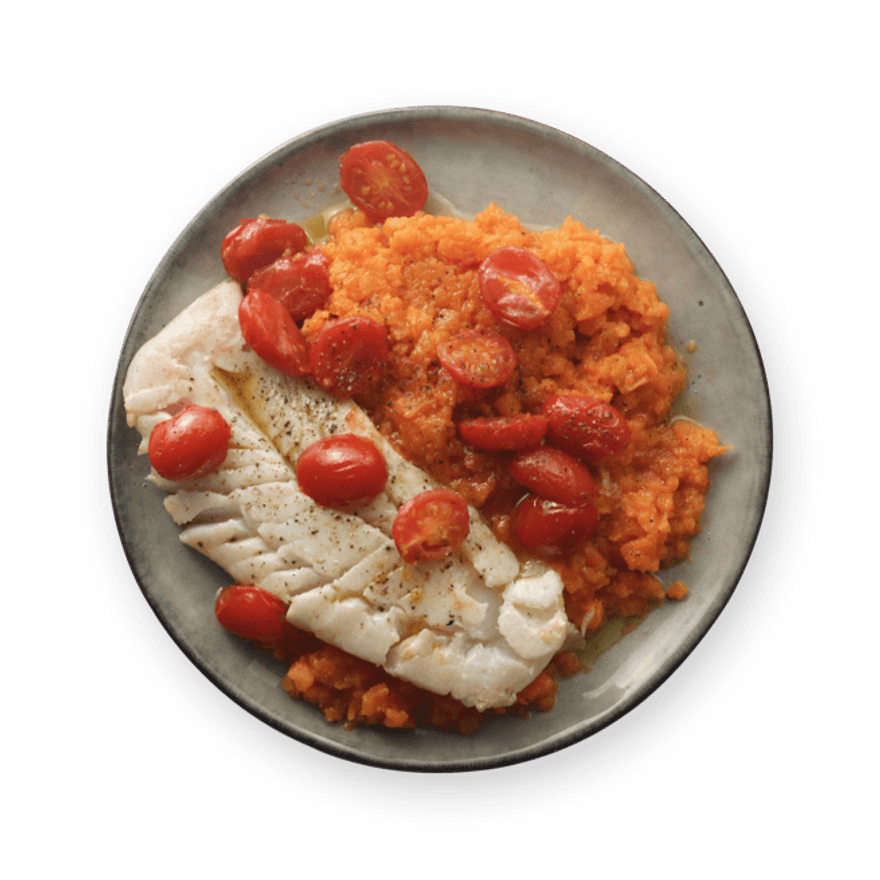Oops! 🤓
This recipe is not yet fully translated into English...
Ingredients
Make sure you have...
Utensils
Pot (small), Stovetop, Frying pan, Colander
recipe

Step 1
If needed, thaw the cod. Wash, peel and chop the carrots into small sections
Step 2
Boil the carrots for 15 minutes.

Step 3
Pendant ce temps, coupez les tomates cerises en deux.

Step 4
Meanwhile, put some olive oil in a pan and add the cod. Cook for 4 minutes on each side along with the halved cherry tomatoes. Season once cooked.

Step 5
Ajoutez le cabillaud dans la poêle et faites cuire 4 minutes de chaque côté. Salez et poivrez en fin de cuisson.

Step 6
Once the carrots are cooked, mash them with a fork. Add olive oil and seazon.
Step 7
Serve with the cod, tomatoes and a drizzle of olive oil.
Personal notes
Add your own flavor!
Nutrition facts
Average estimated amount for one serving
| Energy | 205 cal. |
| Fat | 2 g |
| Carbohydrates | 22 g |
| Protein | 22 g |
| Fiber | 8 g |
Values are based on an average estimate for one serving. All nutrition information presented on Jow is intended for informational purposes only. If you have any concerns or questions about your health, please consult with a health-care professional.
On average, one serving of the recipe "Cod with carrot purée" contains 205 Energy, 2 g of Fat, 22 g of Carbohydrates, 22 g of Protein, 8 g of Fiber.
Price per portion
| € | Nos recettes à -2 € par portion |
| €€ | Nos recettes entre 2 € et 4 € par portion |
| €€€ | Nos recettes à +4 € par portion |
Please note, the price above is dependent on your grocer and the available products in the grocery store you chose.
Scores


A Nutri-score
The Nutri-score is an indicator intended for understanding nutritional information. Recipes or products are classified from A to E according to their food composition to promote (fiber, proteins, fruits, vegetables, legumes, etc.) and foods to limit (energy, saturated fatty acids, sugars, salt, etc.).
C Green-score
The Green-score is an indicator representing the environmental impact of food products. The recipes or products are classified from A+ to F. It takes into account several factors on the pollution of air, water, oceans, soil, as well as the impacts on the biosphere. These impacts are studied throughout the product life cycle.
Retrieving reviews...



